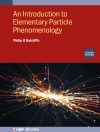In this book anisotropic one-dimensional and two-dimensional nanoscale building blocks and their assembly into fascinating and qualitatively new functional structures embracing both hard and soft components are explained. Contributions from leading experts regarding important aspects like synthesis, assembly, properties and applications of the above materials are compiled into a reference book. The anisotropy, i.e. the direction-dependent physical properties, of materials is fascinating and elegant and has sparked the quest for anisotropic materials with useful properties. With such a curiosity, material scientists have ventured into the realm of nanometer length scale and have explored the anisotropic nanoscale building blocks such as metallic and nonmetallic particles as well as organic molecular aggregates. It turns out that the anisotropic nanoscale building blocks, in addition to direction-dependent properties, exhibit dimension and morphology dependence of physical properties. Moreover, ordered arrays of anisotropic nanoscale building blocks furnish novel properties into the resulting system which would be entirely different from the properties of individual ones. Undoubtedly, these promising properties have qualified them as enabling building blocks of 21st century materials science, nanoscience and nanotechnology. Readers will find this book professionally valuable and intellectually stimulating in the rapidly emerging area of anisotropic nanomaterials.
Quan Li, Ph.D., is Director of the Organic Synthesis and Advanced Materials Laboratory at the Liquid Crystal Institute of Kent State University, where he is also Adjunct Professor in the Chemical Physics Interdisciplinary Program. He has directed research
projects funded by US Air Force Research Laboratory (AFRL), US Air Force Office of Scientific Research (AFSOR), US Army Research Office (ARO), US Department of Defense Multidisciplinary University Research Initiative (Do D MURI), US National Science Foundation (NSF), US Department of Energy (DOE), US National Aeronautics and Space Administration (NASA), Ohio Third Frontier, and Samsung Electronics, among others.
Tabla de materias
From the Contents: Preface.- Anisotropic Gold Nanoparticles: Synthesis, Assembly and Optical Applications.- Semiconducting Nanowires for Energy.- Piezotronic One-Dimensional Nanomaterials: Preparation and Applications.
Sobre el autor
Li’s group in Kent has successfully synthesized the first bio-inspired porphyrins capable of being perpendicularly aligned, the first light-driven chiral molecular motors with a tunable Bragg reflection over 2000 nm, the first nanoscale light-driven chiral molecular switch capable of reversible and dynamic phototuning reflection color truly over the entire visible spectrum and the first organosoluble photoresponsive hybrid chiral gold nanorods…He and his collaborators have fabricated the first photodisplay without the need and cost of drive and control electronics necessary for electronic displays and have demonstrated the first highly ordered nanostructured thin films composed of the porphyrin and fullerene blend for organic photovoltaics and have fabricated the first intelligent multi-functional energy-saving photochromic liquid crystal window. He has got royalty from his four patents invented at Kent. He is the editor of three Wiley books and one Springer book, and co-authors more than twenty chapters. In last several years, Li had been a Principal Investigator (PI) and Project Director (PD) in awarded federal grants from US Department of Defense (Do D), US Department of Energy (DOE), US National Aeronautics and Space Administration (NASA), and US National Science Foundation (NSF). Li is also involved in the LCI $ 15 million Ohio Research Scholar Program where he proposed self-organizing organic photovoltaics. He won 2014 Outstanding Research and Scholarship Award.












